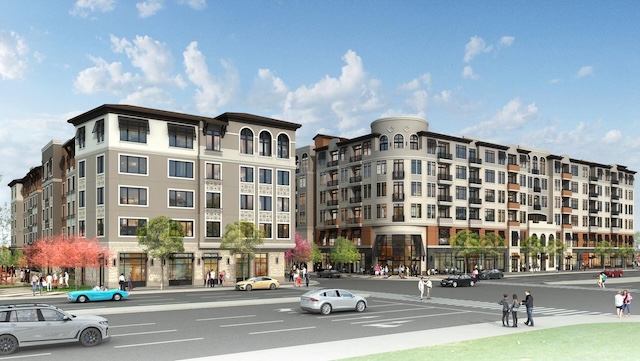In December, I pointed out that Silicon Valley’s transit system was designed for the 1910s and suggested a way to redesign it so that it would serve a 2020s urban area. Last month, the Santa Clara Valley Transportation Authority (VTA) announced that is attempting the exact opposite strategy: it wants to turn Silicon Valley into a 1910s urban area.
Planned high-density developments aim to turn San Jose into a Greenwich Village lookalike. Source: Republic Urban Properties.
Last week, a Silicon Valley group called Opportunity Now published my assessment of why this strategy is bound to fail. Instead, it will waste a lot of tax dollars and enrich a few property developers without making the region’s housing more affordable or helping regional mobility.









Does Opportunity Now pay better than the Denver Automobile Dealers Association? Just trying to get a sense of the market. I’m looking at writing some pieces against bike lanes and might want to ask you for a referral.
Planned high-density developments”
With 8 lanes of driving in between…. but they’ll be Pedestrians I don’t know whether to laugh or cry.
Suburban Virginia, town of Leesburg: where walking to TGI Fridays, IHOP or Buffalo Wild Wings can take 25 minutes, even though it’s only 400 feet away because streets are so unwalkable.
https://pbs.twimg.com/media/GIWMXFeXIAAJ17j?format=jpg&name=medium
This is what’s wrong with American urban design…
Segregative housing/commercial zoning flows make it impossible to integrate into a town centric models…..
Meanwhile at DisneyWorld/Land, A 1 DAY ticket costs 169-259 dollars. That’s right people PAY good money, to enjoy a REPLICA of a good old fashioned street with shops and doors and windows and sidewalks and benches and trees.
Good points
Google cancelled its $15 billion massive downtown San Jose campus, by the way. Something worth mentioning in the article.
https://sanjosespotlight.com/googles-mega-campus-in-san-jose-hits-a-snag/
Downtown San Jose office vacancies are at a 10-year high.
A quick search on Loopnet, shows 80-100 buildings of Commercial real estate available for rent.
https://www.loopnet.com/search/office-space/san-jose-ca/for-lease/4/?sk=8b8f9db88ee23810477779a8fad85866
12 buildings with more than 100,000 square feet office space.
Big Companies obsessions with Office campuses.
NVIDIA’s 900 million dollars UFO-pussy shaped Voyager headquarters.
Consolidating companies make Some sense. Computers and their hardware, namely cooling, data mining and server hardware, consume vast power demands that Class-A offices usually don’t possess. AS A central location. distributed offices have lower power demands, any practical concerns can actually be addressed with on site generation. Better to have a “Central” HQ for administrative with satellite offices in various locations.
Saves commute and traffic not having to shuffle 10,000 people to same location daily
Randal O’Toole is misleading you.
Yes, CA has land restrictions along with CEQA and other policies making permits longer thus raising prices.
However, even if 100% of the entire state was urbanized, places like San Jose would still be pricey.
Therefore, these areas MUST go up to increase the supply of housing which is the MAIN cause for unaffordability. Get rid of height restrictions, low density single use zoning, parking minimums, etc…
Also, there are plans to build personal rapid transit in the area which will be a huge game changer.
Good news for the antiplanner! Microplastic particles per trillion miles driven are no higher in Los Angeles than in countries where freedom and mobility are much lower, study finds:
https://www.latimes.com/environment/story/2019-10-02/california-microplastics-ocean-study
“However, even if 100% of the entire state was urbanized, places like San Jose would still be pricey.”
Why’s that? If you’re going to make assertions like that you need to at least attempt to justify them.
Not all land in CA is the same.
Some are close to jobs and beaches. There is much higher demand on those areas than deserts.
So? The fact is that urban growth boundaries appreciates the price of available land. Palm Springs, Las Vegas, and Phoenix are all in deserts.
Building more there will not lower prices along the coasts drastically.
How do you know?
The setting of San Jose isn’t really that nice. There’s tons of comparable land in California. The only reason housing is so expensive in and around San Jose is that it is illegal to build the housing needed to meet the demand. There is a plentiful land south of San Jose suitable for development but after decades of effort the would be developer of this land, generally called Coyote Valley, gave up on getting approval to build housing on this land.
Land and height restrictions